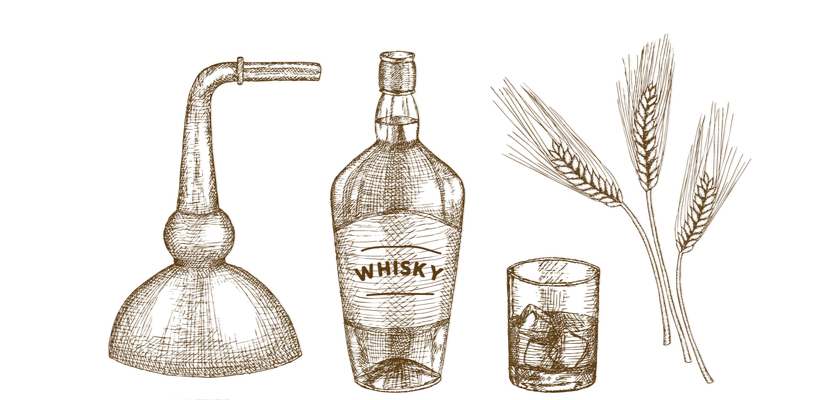In between malting, mashing, distillation, maturation, and filtration,, you could say that craft distillers are in the business of transferring liquids.
Distilleries need dependable pumps that fit their production cycle, helping to create a repeatable, consistent, and safe process. Different pump types allow different distilleries to easily transfer and filter liquids depending on their process specifications.
Pumps are used for almost every stage of production, including:
- Bringing in water
- The mashing stages
- Wort recirculation
- Fermentation transfer
- Filling barrels
- Distillation
- Filtration
- Filling bottles
The two main pump types—centrifugal and positive displacement—offer a wide range of options for varying capacities of liquid transfer. But a distiller chooses a pump based on more than just the amount of liquid they’re dealing with. Processing stage, pressure, as well as the proof of the distillate or liquid they will transfer matter, too. Other considerations include head capacity, the liquid’s viscosity, density, and acidity.
Picking a high-quality, industrial strength pump that matches your needs is a smart investment that can help your equipment last longer and work harder.
A Note on Pump Safety
The pumps we carry can all be grounded and feature explosion-proof motors. We recently covered why explosion-proofing is an important safety precaution in our last blog post about The Electric Sombrero of Death.
In short, adding electrical equipment to an indoor space containing varying degrees of high-proof liquids and vapors can be a dangerous combination. Even air motors can cause sparks and need to be placed carefully in your facility.
The distillation process involves concentrated alcohols in liquid and vapor form—both of which are highly flammable and require specialized equipment. Explosion-proof motors in pumps are one part of the equation for a safe distillery. Pump and equipment placement is another vital consideration, mapped out by the Sombrero, pictured below. Only pumps with explosion-proof motors should be used near a classified area.
Non-explosion proof motors, like VFDs, are still used in some situations, and can be an affordable option. These are not explosion-proof and need to be even more carefully placed, taking the Electric Sombrero of Death into consideration.
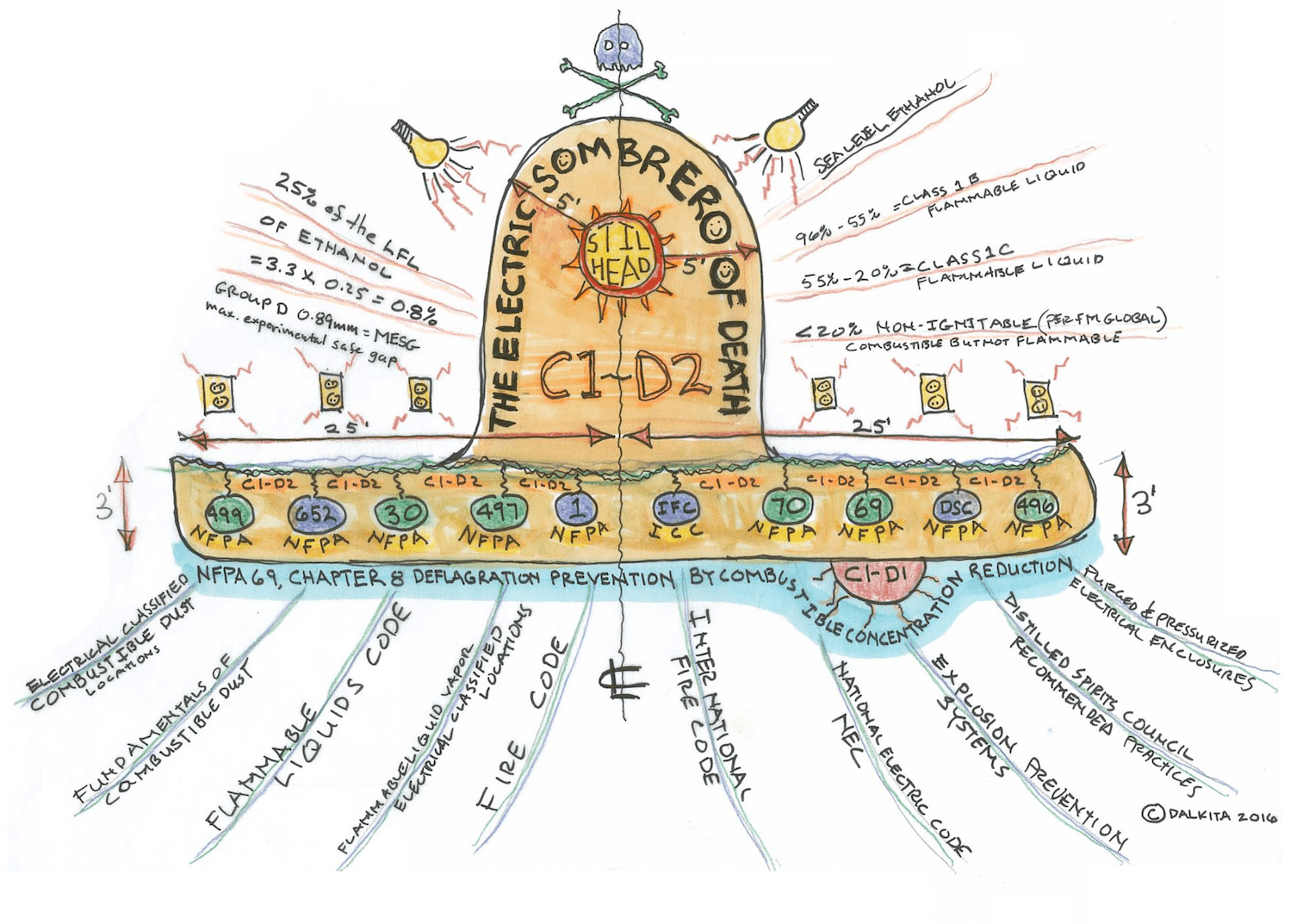
Scott Moore of Dalkita Architecture and Construction developed an informative model called “The Electric Sombrero of Death” to illustrate the dangers of toxic gases in industrial settings, how to prevent dangerous scenarios, and which guidelines regulate safety.
Back to picking a pump.
To help you choose the right pump for your process, take a look at different pump use cases and specifications below.
Centrifugal Pumps
Centrifugal pumps are often used to recirculating liquid and transferring high-proof spirits.
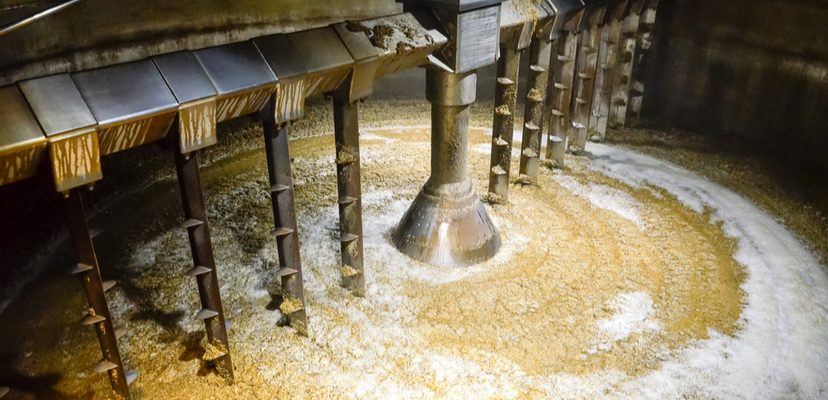
How do you get all this highly viscous mash to the next stage of production? With the right pump!
Centrifugal pumps work well with the stages of production that involve high flow-rates (such as bringing in water) and transferring high-proof liquids. If you’re working with a tank, you’ll typically hook up a centrifugal pump. We currently carry four centrifugal pump options
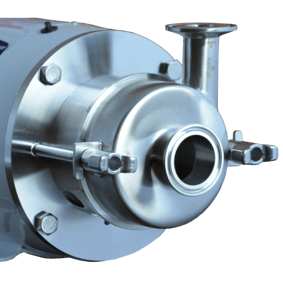
- ½ HP C-Series Pump with Explosion-Proof Motor: With 1/2 horsepower, this pump is a quality option for smaller distilleries producing low volumes. It has a long service life with minimal downtime.
- 1 HP Centrifugal Pump with Explosion-Proof Motor: Medium processes with low flow and low discharge pressure can up the ante to 1 horsepower. The C100 Pump has a stainless steel adapter and backplate for optimal longevity. An O-ring on the backplate provides a tight, secure seal to the casing for longer, problem-free operation. Because all of the other C100 Pump components remain the same, existing pumps can be easily retrofitted to the new adapter and backplate.
- 3 HP C-Series Pump with Explosion-Proof Motor: The 3 horsepower, stainless steel C-series pump can accommodate a variety of liquids and solids under a range of flow conditions and pressures. The stainless steel body is easily maintained and is corrosion-resistant. It has 1.5″ tri-clamp connections.
- Cart-Mounted Centrifugal Pump with 3 HP Explosion-Proof Motor: A cart-mounted pump works well for a distillery that needs to use one pump for multiple applications and stages of production. It has attachments for a 1 phase VFD and easy hose storage.
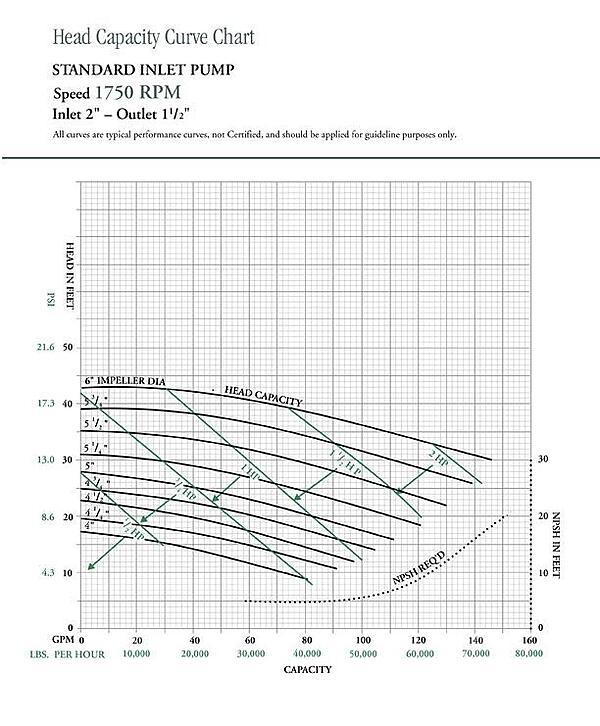
The Head Capacity Curve Chart shows how to determine the power and efficiency of a given pump based on the amount of liquid product you intend to transfer. Pay close attention to impeller diameter, which will increase or decrease your pump’s efficiency considerably.

Positive Displacement Pumps
Positive displacement pumps always move liquids at the same speed regardless of pressure conditions. The real benefits here are that they are self-priming and use suction to produce a constant flow rate. You’ll typically see a positive displacement pump being used to draw fluid out of a tote or barrel. When processing more viscous fluids, positive displacement pumps are the longer-lasting, more efficient option.
We carry two rotary positive displacement pumps, both of which are self-priming and can move product from 75 feet away.
- 10 GPM Self-Priming Positive Displacement Pump with XP motor: The ESP-10XP provides up to 15 gallons per minute of flow with a 3/4 HP 1/60/110/1200 explosion-proof motor, Teflon gears, and an integral bypass to regulate flow from 0-15 GPM. The pump is mounted on a portable cart.
- 3 GPM Self-Priming Positive Displacement Pump with XP Motor: The Model ESP-3XP provides up to 3 gallons per minute of flow with a 1/4 HP 1/60/110/1800 explosion proof motor, Teflon gears, and an integral by pass to regulate flow from 0-3 GPM all mounted on a portable cart.
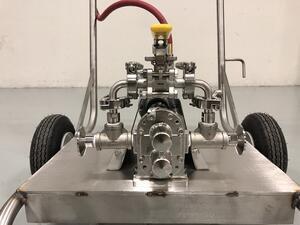
For your heaviest, thickest mashes and liquids that have a higher percentage of solids—like grain mixtures for rye, whiskey, and bourbon before fermentation—Screw Pumps, Diaphragm Pumps, or Flexible and Impeller Pumps are the way to go. They’re built to handle fluids in completely separate compartments from the pumps’ more vulnerable functional parts, keeping your equipment clean while getting your liquids where they need to go.
Want to learn more? Get in touch to speak with one of our supply professionals about long-lasting pump options and other essential equipment.




